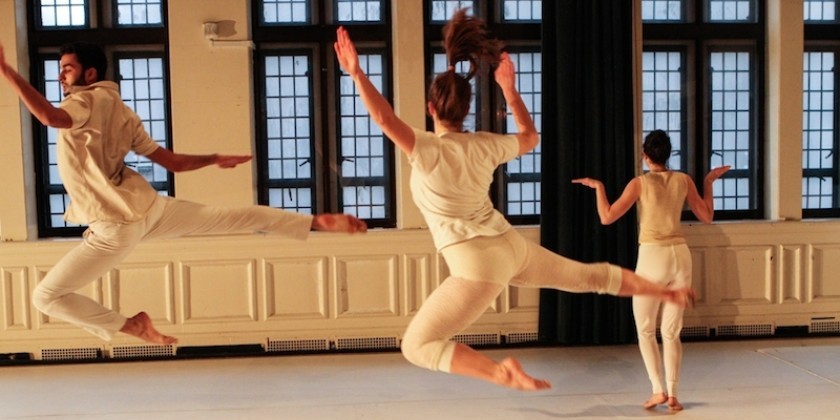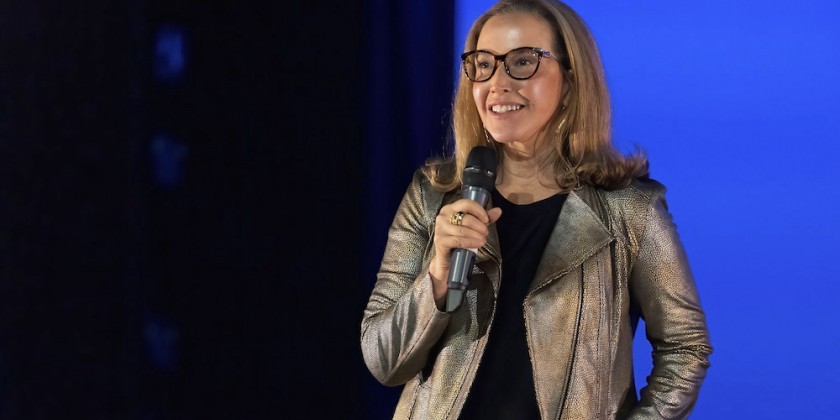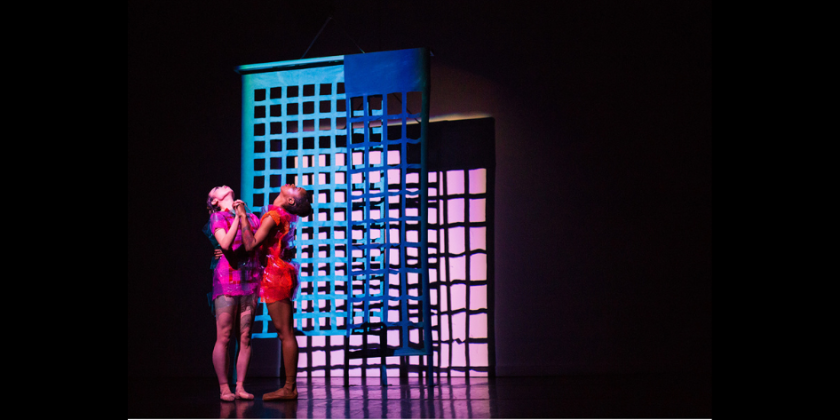Impressions: Netta Yerushalmy Cubed

at The Harkness Dance Festival 2014 “STRIPPED/DRESSED”
Choreographed by: Netta Yerushalmy
Presented by: The 92nd St Y as part of The Harkness Dance Festival 2014, “Stripped/ Dressed”, curated by Doug Varone
Dancers: Marc Crousillat, Amanda Kmett’Pendry, Sarah Lifson
Music: composed and performed live by Judith Berkson
The third weekend of 92nd St Y's STRIPPED/DRESSED series, curated by Doug Varone, features the work of Netta Yerushalmy, his former company member.
Reversing the typical order,STRIPPED/DRESSED offers the opportunity for choreographers to share insight into their methods before the showing of the piece. Yerushalmy speaks engagingly about her choreographic process and specific inspirations for New Work.
Expressing an interest in visual art, she finds many parallels between that creative process and making dances. New Work investigates the concepts that influenced the Cubist Movement, as well as the writing of Gertrude Stein, and Stein's own interest in Cubism.

Yerushalmy uses meticulously constructed, mathematical systems for developing her movement vocabulary. The structure for New Work amalgamates two disparate movement phrases into one: A base sequence combines with various phrases generated by her dancers. Cycling between the two, moments of shifting weight act as the primary building blocks. The result exhibits the sliced and diced appearance of a Cubist painting.
New Work, performed by a fresh, young trio, begins unexpectedly. Sarah Lifson strides onto the stage and stands in the center, facing huge windows in which the winter sun brightens the stage space. She stands in silence for a long time, and the arrangement of white costume, white Marley, and sunlight is incredibly satisfying. Marc Crousillat and Amanda Kmett’Pendry join her, and the three promptly topple to the floor.
Judith Berkson, Yerushalmy's musical collaborator, unexpectedly bellows a jarring note. Berkson, situated in the audience, remains there until the end of the piece, when she casually makes her way from the audience to the stage space, thus breaking the fourth wall. Berkson's sparse score is comprised of an assortment of intermittent vocal noises, interwoven with the intonations of what sounds like a mini melodica.
Yerushalmy crafts angular and aggressive movement, which challenges natural shifts of weight, creating a fascinatingly awkward effect. The work juxtaposes large angular movement with soft, rounded gestures. One recurring motion is the flicking of wrists, often coupled with facial flinching. Yerushalmy treats the muscles of the face like any other muscle of the body, using them for expressive movements. In a humorous and clever moment, Crousillat faces toward us and moves only his eyeballs.

Amidst the precisely woven mathematical choreography, we witness occasional intimate moments. Like the use of collage in Synthetic Cubism, these moments of tenderness directly counter the aggressive, jagged movement. Similarly, we see extreme contrasts of focus; the dancers peer directly at us while other times they melt into their abstract world with an internal focus.
Just as Berkson makes her way onstage, the lights suddenly dim, leaving the trio posed in the three large windowsills. Berkson is center stage, mimicking Lifson’s initial tableau. The ending of the piece is as ambiguous as the start: The dancers clump around Berkson in a pool of light, which is suddenly extinguished.
The STRIPPED/DRESSED series inadvertently addresses how much information an audience needs to appreciate a piece. While Yerushalmy’s explanations prove enlightening, it also impedes our interpretative freedom. I wonder what could have been seen in the work had we not known Yerushalmy's intentions.
This series illuminates an interesting dialogue — who makes the art, the creator or the interpreter? While in this instance, the series stole a bit of power from the audience as interpreters, seeking an appropriate balance is a valuable exploration.













